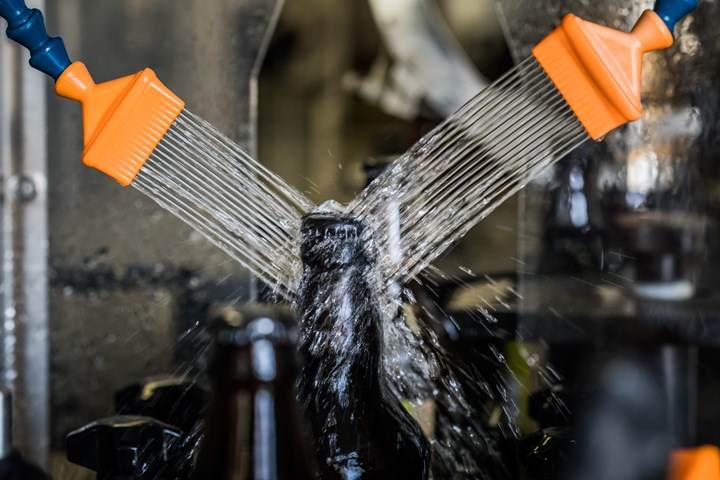The Best Technical Cleanliness Practices for ISO 16232
The aim is to assess and compare the technical cleanliness of parts produced by different manufacturers or at different locations.

No matter whether I talk to parts manufacturers or cleaning machine manufacturers, one topic has been an issue over the last decade and still is: residual dirt, or “technical cleanliness.” The good news is that the requirements for particulate cleanliness have not increased further in industries such as automotive, hydraulics and mechanical engineering. In fact, there is a rethinking of whether cleanliness, which is feasible, is necessary because the cleaner the parts have to be, the higher the costs are for cleaning. However, in the case that cleanliness specifications are defined, they must be met, not only when the cleaning system is put into service, but throughout its entire operational life cycle. And this is being checked by more and more companies. Overall, the number of companies that define cleanliness values and control cleaned parts continuously has grown significantly.
When it comes to checking particulate part cleanliness, VDA 19, or its international equivalent, ISO 16232, has become an integral part of quality management. The aim is to objectively assess and compare the technical cleanliness of parts produced by different manufacturers or at different locations. A prerequisite to ensure comparability is that the defined cleanliness level is linked to a test specification.
That is where it gets complicated, because machined parts usually have a geometrically complex design, and therefore, the detection of particulates cannot simply be done on the surface. It requires a verifying cleaning process (extraction) in which particulates are transferred into a liquid medium, which is filtered, and then the particulates on the filter medium are measured. Thus, the test specification must contain information on the parameters of the verifying cleaning process and particle measurement technology. This also includes testing and optimizing the parameters of the cleaning process for the part in question using decay measurements in order to ensure that all particulates will be removed without attacking the part material.
Various methods can be used to extract the particles from the component: spraying, ultrasound, rinsing and shaking, although process parameters such as flow rate or ultrasound power are not provided for any of these procedures. This freedom has led to a lack of cleanliness comparability in the analysis results. The extraction was therefore one key point in the VDA 19 revision. The new version, which has been available since the middle of last year, includes starting parameters for the different extraction procedures.
For the extraction by means of spraying, the use of a certain nozzle diameter and volumetric flow is recommended. With flow-through and blowing, two new extraction methods that use air as media have been included in the new VDA 19.1. They are used for parts which are not exposed to liquids during manufacturing or operation.
After the extraction fluid is filtered and the filter dried, the sample analysis takes place. In order to improve comparability here, too, the revised VDA version contains conventions for systems and adjustments for gravimetrical and light microscopical standard analysis.
Another novelty is the abridged analysis performed, for example, with liquid particle counters or a new system. This is based on optical recognition and particulate measurement, adherent to a sieve placed in the media stream. Because of the different detection principles, the results of the light microscopical standard analysis and abridged analysis are not directly comparable.
In the case that cleanliness specifications and analysis results do not match, it is helpful to find the reason. First, check cleaning process parameters, the quantity of contaminants brought into the cleaning baths or if anything has changed regarding the auxiliary substances used, such as milling oils or emulsions. If everything is OK, knowing where particulates originate is key to meeting the specification or for targeted process optimization. Different analysis methods can be used for determining the particle material and performing 3D measurement.
Since cleanliness has become an important quality criterion for parts manufacturing, checking and documenting the compliance of specifications has become part of the production process, at least in some industries, such as automotive. And I am sure it will spread further: The next step will be specifications for film-like contamination.
Related Content
Multisolvent 100 Vacuum Vapor Degreaser Provides Contactless Cleaning
PMTS 2023: With applications in the most demanding industrial sectors, the machine is especially useful for cleaning parts in the turning, precision mechanics, medical and aerospace industries.
Read MoreA ‘Clean’ Agenda Offers Unique Presentations in Chicago
The 2024 Parts Cleaning Conference, co-located with the International Manufacturing Technology Show, includes presentations by several speakers who are new to the conference and topics that have not been covered in past editions of this event.
Read MoreIndustrial Cleaning Shop Zeros In on Precision
This parts cleaning company is elevating its efforts to become a technical cleanliness expert, which presents an exciting, yet sometimes arduous, journey. The ongoing education of the team as well as significant investments in equipment and processes attribute to this shop’s success.
Read MoreIn-line Monitoring for Automated Immersion Cleaning Systems
Ecoclean’s Acoustic Performance Measurement (APM) system provides in-line measurement of ultrasonic frequency and power in fully automated immersion cleaning systems on a batch-by-batch basis or at defined time intervals, such as once a shift, day or week.
Read MoreRead Next
Cleanliness Compliance is Critical for Automotive Suppliers
Although not every shop has been affected by cleanliness specifications, many suppliers to automotive OEMs are already complying with stringent cleanliness standards. In Ford Motor Co.’s case, it has created its own cleanliness standards in order to save money and credibility.
Read MoreDo You Have Single Points of Failure?
Plans need to be in place before a catastrophic event occurs.
Read MoreA Tooling Workshop Worth a Visit
Marubeni Citizen-Cincom’s tooling and accessory workshop offers a chance to learn more about ancillary devices that can boost machining efficiency and capability.
Read More





















